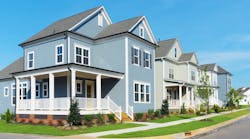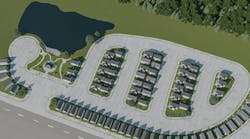Student Housing Sector Makes Strong Post-Pandemic Recovery
At the peak of the COVID-19 pandemic, universities across the U.S. paused all on-campus activity and switched to remote learning, forcing thousands of students to leave student housing and return home. Two years later, enrollment outlook is strong, on-campus occupancies are growing at a rapid clip, and pre-leasing is up 10% year-over-year as of July, according to John Burns Real Estate Consulting.
With increased demand also comes a shift in housing development, leading to more pedestrian-friendly dormitory communities and apartment complexes. Increased enrollment also means that colleges and universities are building more student housing complexes and investing more money in new renovations and amenities.
- In the past 10 to 15 years, student housing has become more pedestrian-friendly.
- When land is scarce, student housing can be very vertical, and not just in urban centers.
- Complexes with 500–1,000 units are most efficiently managed.
- Since private student housing is not usually on campus, having access to shuttles and buses is key, particularly in cold winter climes.


